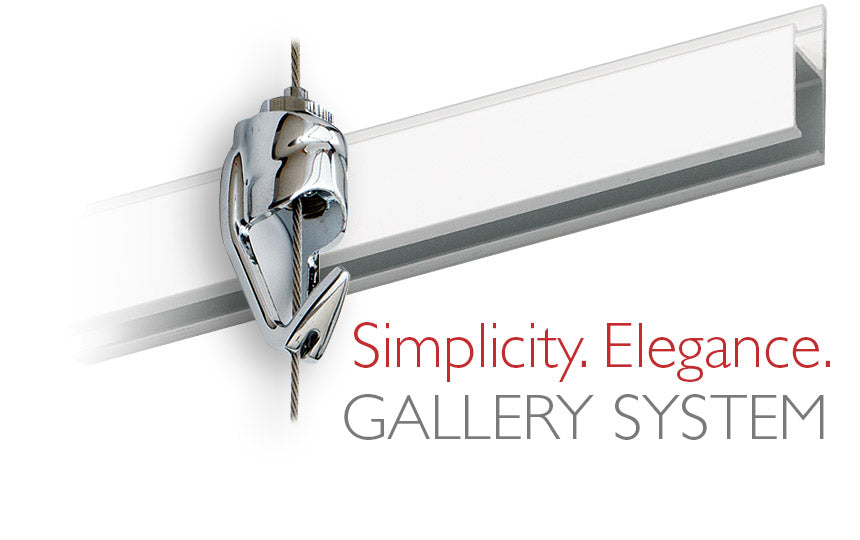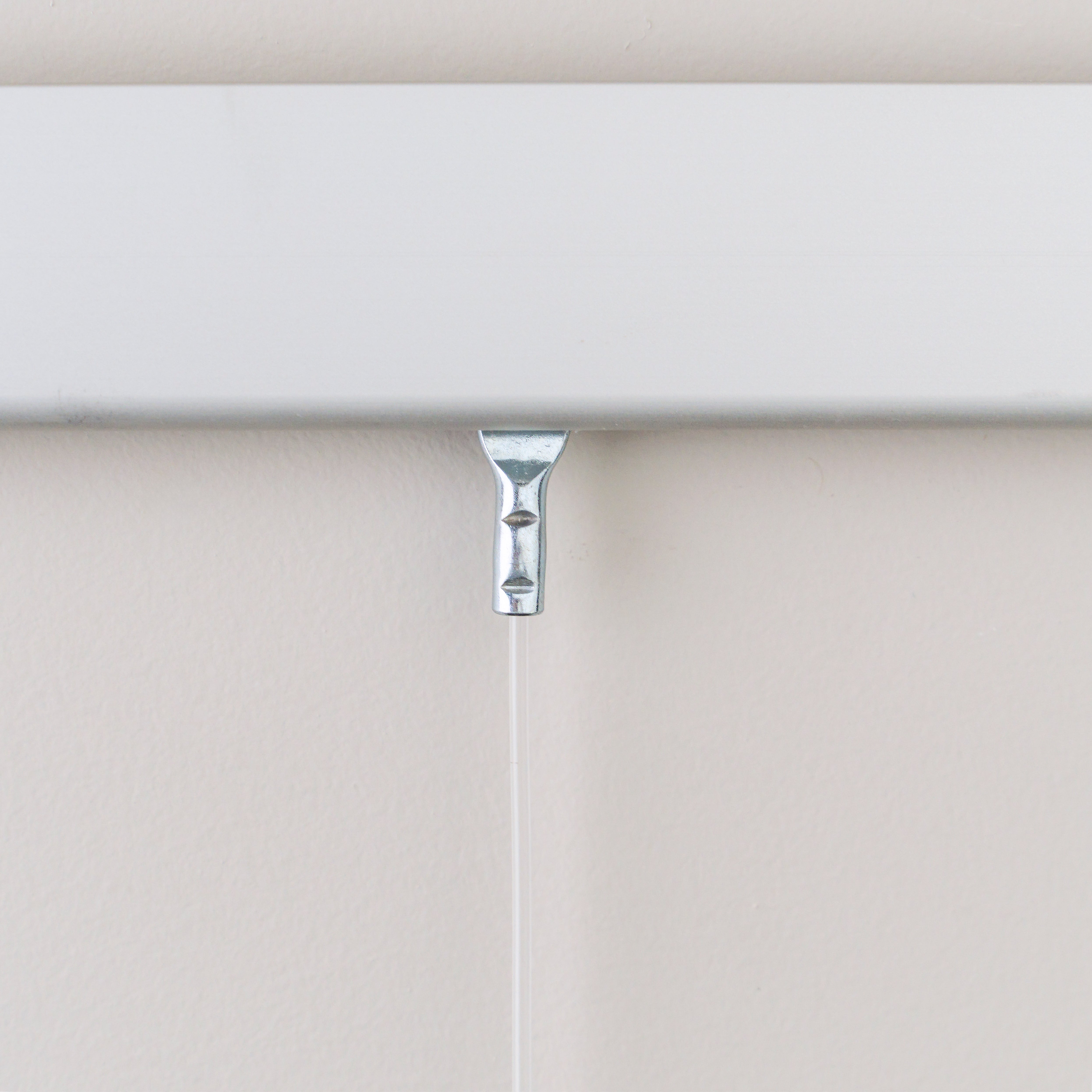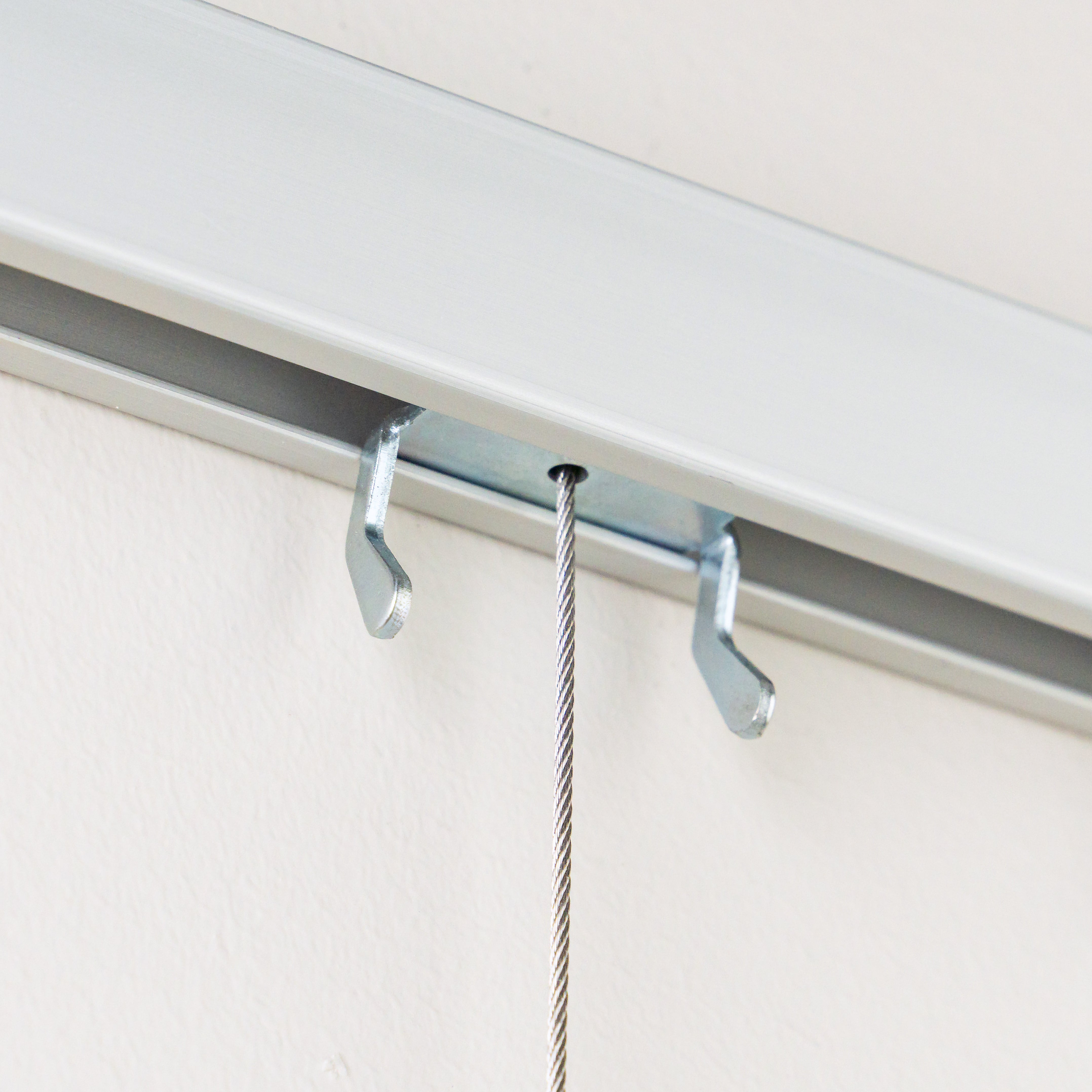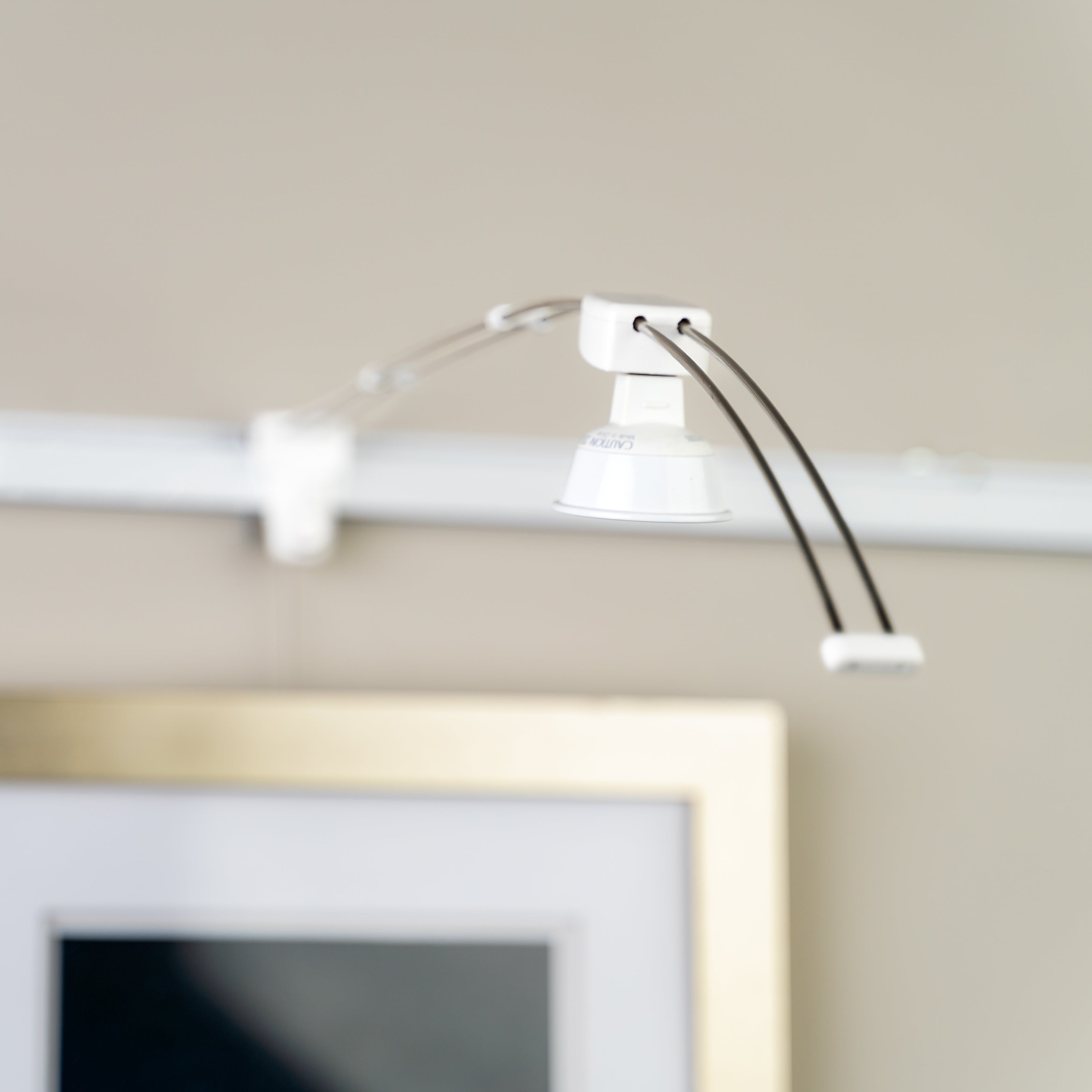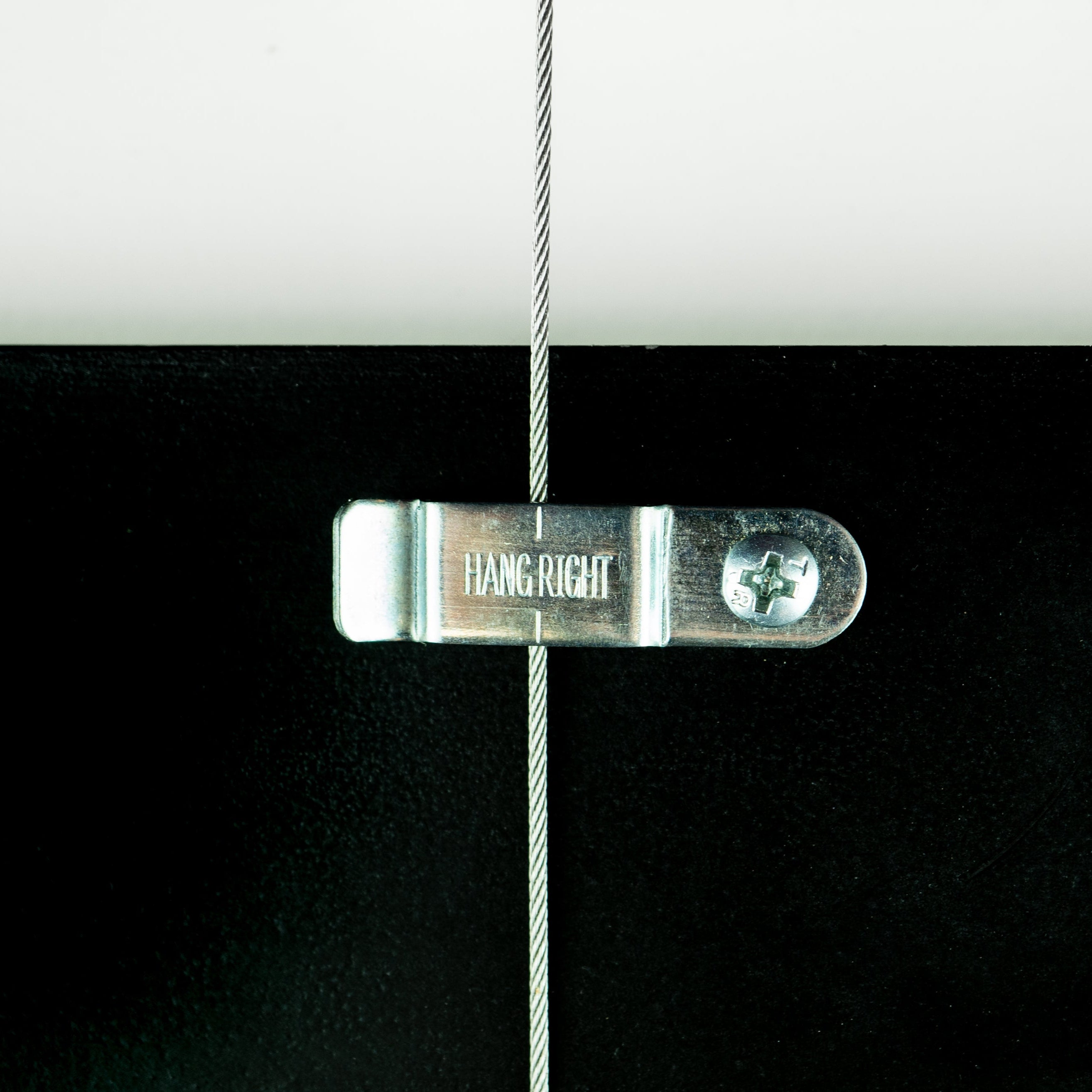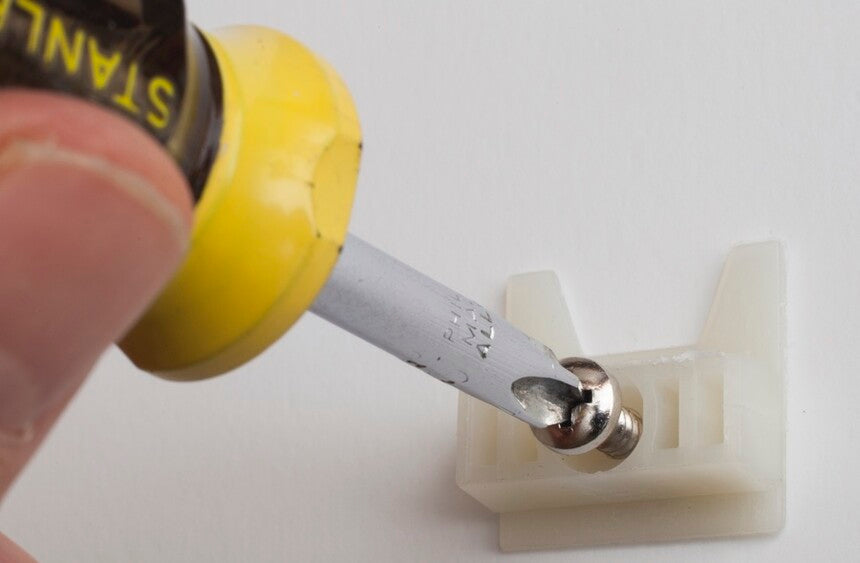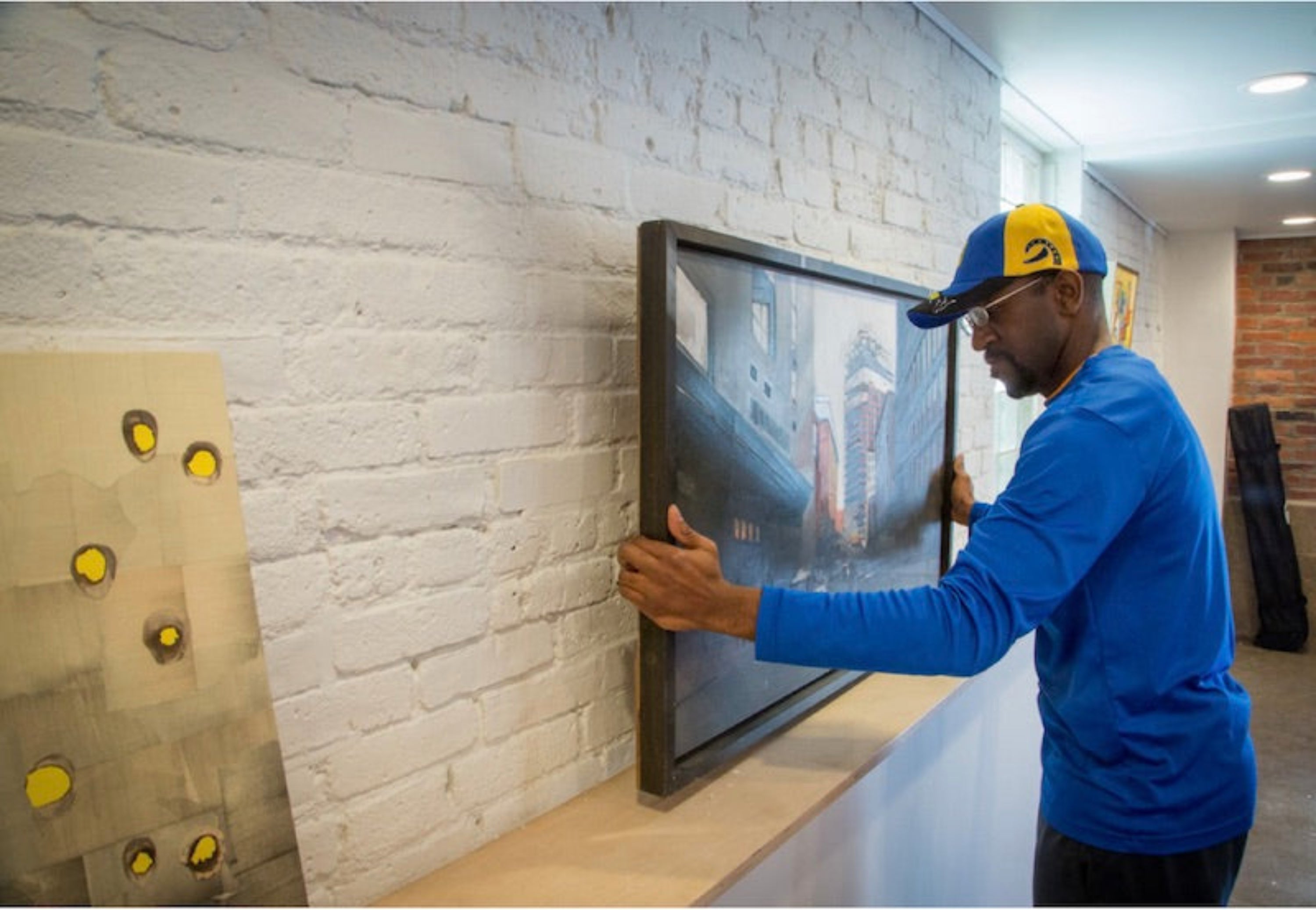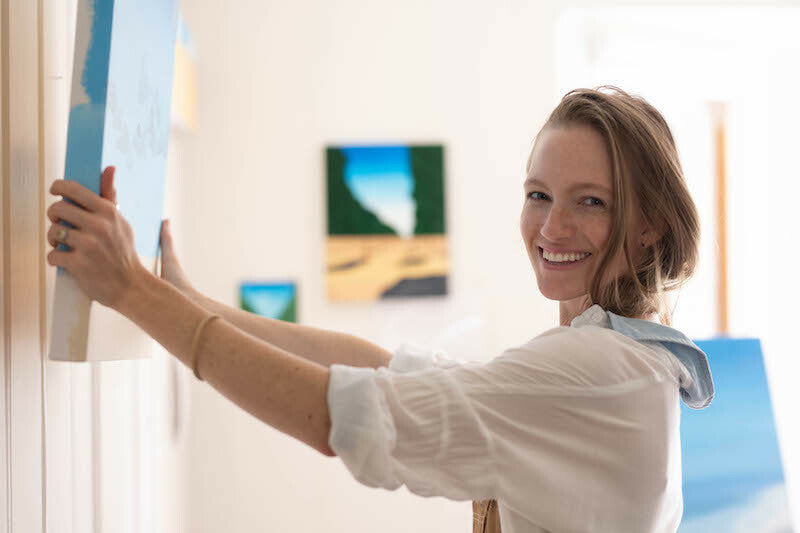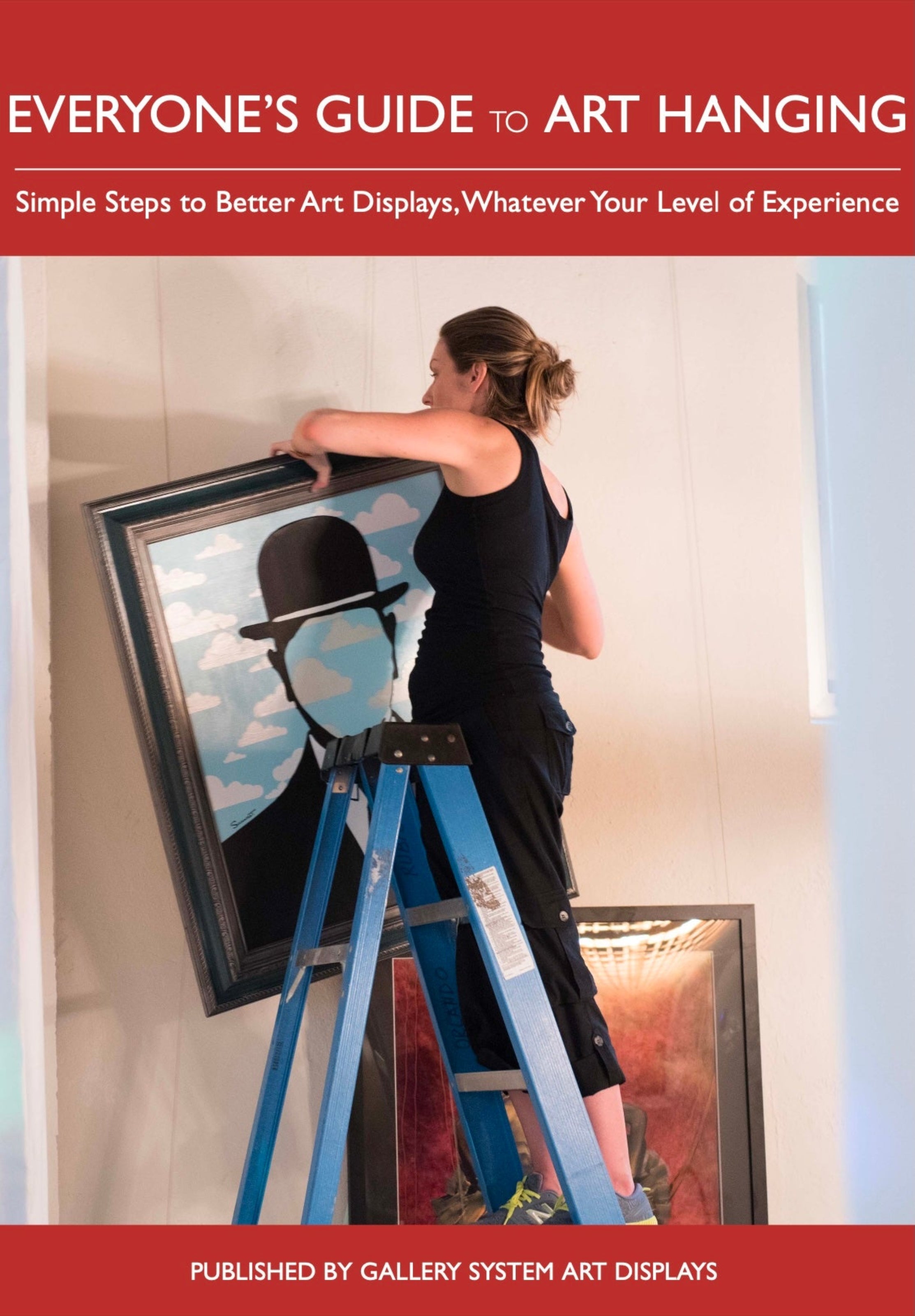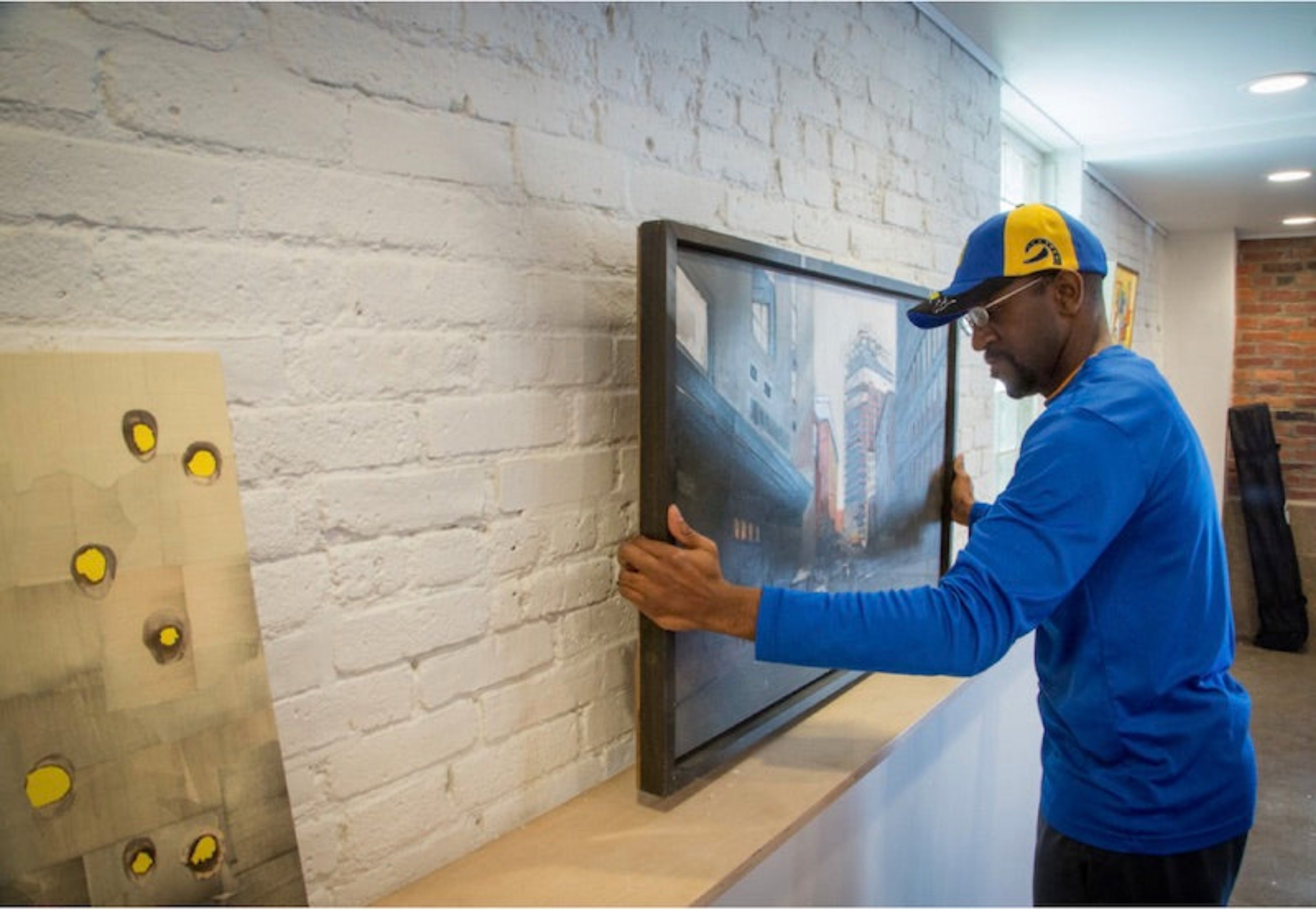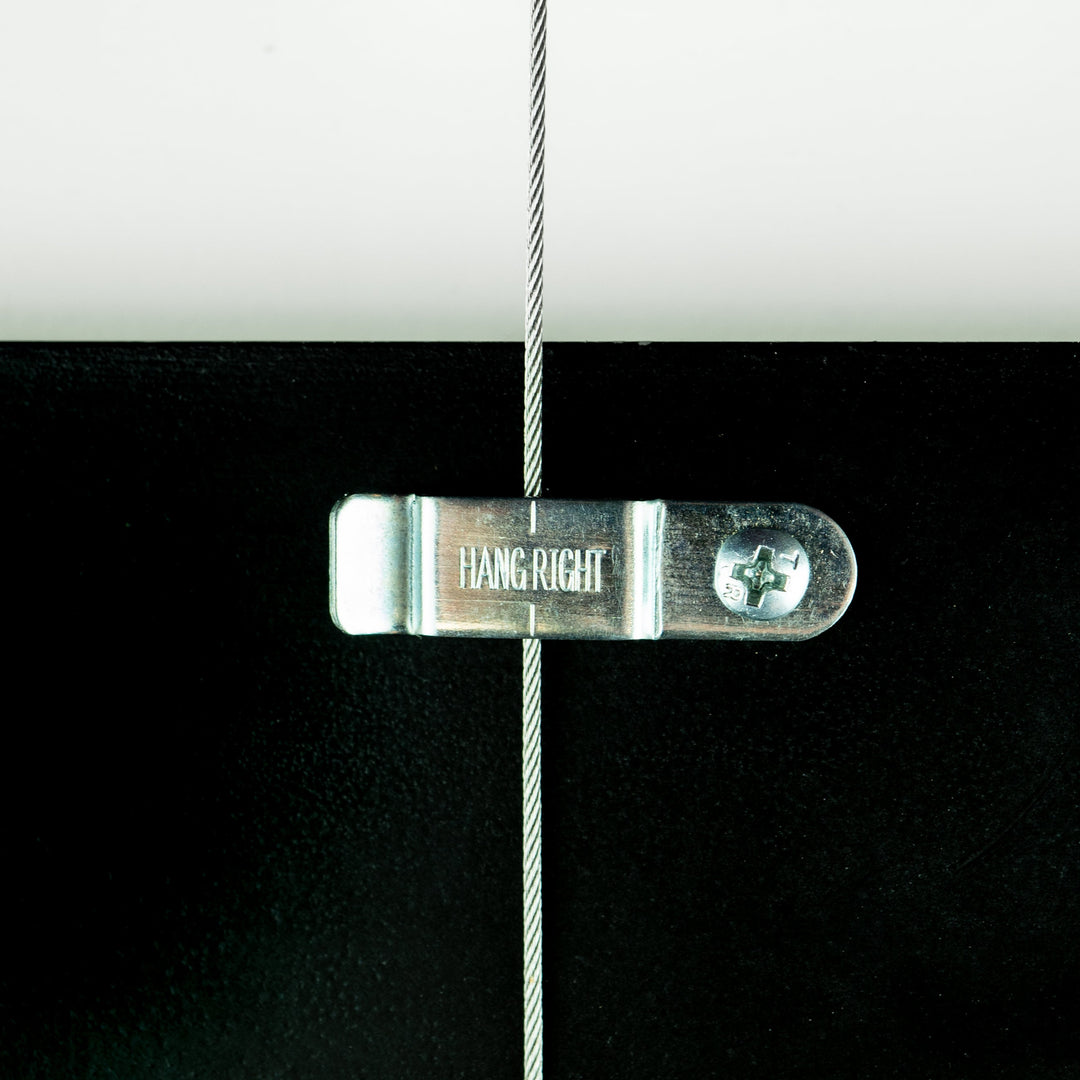When creating an art display, details matter — whether you're using a picture hanging system or less advanced art hanging techniques, it’s important for works to be well positioned and aligned and hung in a way that removes distractions so viewers can focus on the art.
One key consideration is achieving the proper vertical hanging angle for each piece — or, put another way, preventing pictures from leaning away from the wall excessively. Keep in mind that while it’s generally desirable for works to be more or less flat against the wall, in other situations a modest amount of forward lean can be helpful in providing the best viewing perspective.
For example, when hanging a salon-style exhibit, it’s traditional to have the higher-placed works lean forward slightly so that they can be seen clearly from below. Likewise, in a sitting area that has low-slung chairs and couches, a bit of lean can be beneficial to seated viewers.
But in the majority of cases, a near-vertical position is best. The question of how best to achieve this comes up with some regularity and we at Gallery System have identified a number of techniques for preventing pictures from leaning excessively, whatever picture hanging system or art gallery hanging system you use.
The phenomenon of excessive leaning generally affects artworks with a picture wire running across their back side and can occur with both lightweight and heavier pieces. The critical factors, which determine how the weight of the artwork responds to the downward pull of gravity, are:
• The locations where the picture wire attaches to the sides of the artwork,
• The point(s) of connection between the hanging hook(s) and picture wire
• The amount of slack in the picture wire
Our first recommendation has always been to review the picture wire attachment locations. They should be as high as possible, at least three-quarters of the way up on the artwork. In many cases, adjusting their positioning can reduce or eliminate undesired leaning.
Of course, it’s also important that the hanging hooks not be visible above the top of the picture. Moving the picture wire attachment points higher can increase the possibility of this, so in the past we’ve suggested removing slack from the picture wire.
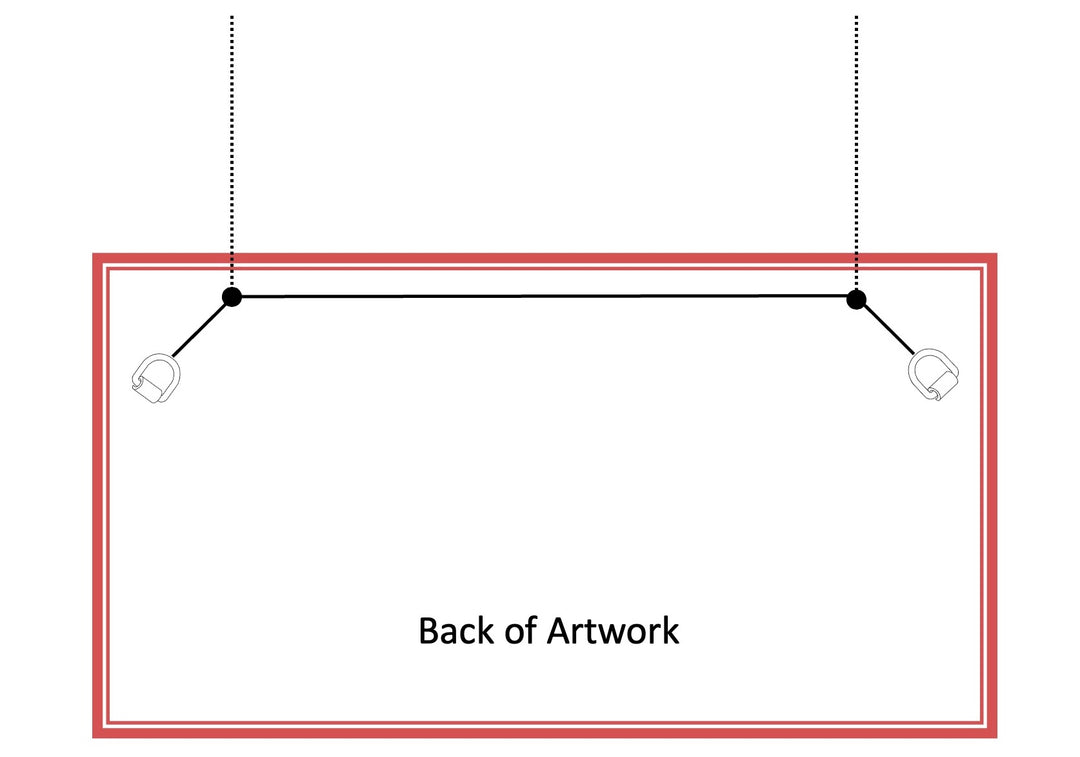
While that’s OK up to a point, it’s important to not overtighten the picture wire. The reason is that taking slack out of the wire will increase stress on the sides of the frame, especially on heavier works, because it positions the wire at more of a right angle to the sides. If you’re interested in more information on the subject, check this scholarly discussion by the Fine Art Trade Guild of the UK. We are grateful to blogger Craig Collins for bringing it to our attention.
A useful way to keep more slack in the picture wire while still concealing the hanging hooks is to use a pair of hangers and hooks (see figure at right), an easy fix when using an art gallery hanging system. This technique is recommended by the Fine Art Trade Guild and can substantially reduce the stress on the sides of the picture frame by creating a more-oblique angle for the hanging wire. Using paired hangers and hooks is also a great way to keep the picture level and prevent side-to-side leaning.
If you’re still having issues with leaning after taking these steps, don’t despair. Here are a few more ways of keeping things straight:
• We offer HangRight clips, a simple and inexpensive way to keep the picture hanging system's Steel Cable, Clearline, or Clear Tape snug against the rear of the artwork — learn more
• Use small “bumpers” on the lower corners of the work. These can reduce the angle of lean by moving the bottom of the work outward slightly from the wall.
• Use the “sandwiching” technique described here This utilizes one or two small fastener strips (such as Velcro or 3M Command) to snug the hanging wire(s) against the rear of the frame. It works very well while also allowing easy adjustment as needed.
As always, the Gallery System customer service team is ready to help with any questions you have about selecting and using our Original Gallery System and GalleryOne picture hanging systems. Call us at 1-800-460-8703 (or 781-237-8856 from outside the US), or email info@gallerysystem.com.


